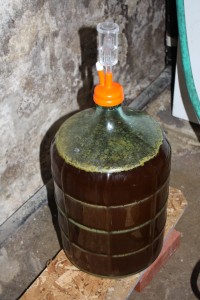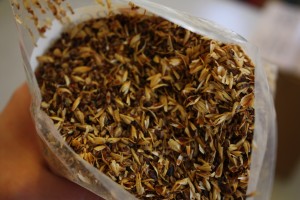I was told beer-making was easy, and based on the Spaghetti-Os-heavy diet of the dudes who told me this, I believed it. After all, your basic beer has (or should have) only four ingredients: water, grain, hops, and yeast. This has been the basic recipe for hundreds of years. Despite our mutual distaste for following the rules, Ben and I embarked on another brewing adventure with this in mind, even as our first attempt still sat in the basement, sulkily maturing into an adolescent IPA. (They grow up so fast!)
First, of course: water. After having soundly lost the Brita vs. Tap Water battle last time, I fished the pitcher from the fridge and began the grueling process of filtering water and pouring it into the kettle. Now, I am not known for my patience…but this takes FOREVER. I’ve got to say, there really is something to be said for boiling water, like, that it sterilizes things. I’ve heard that way back in the day, before germs and public sanitation were discovered, everyone drank beer because it was safer than the water. Everyone! Or so I’ve heard — this would take far too long to actually research.
Next comes the grain, in our case barley. Barley is the grain of choice for most beers, rye and wheat beer being obvious exceptions. This wasn’t always the case. Before the Bavarian Purity Law of 1516, or the Reinheitsgebot (geshundheit!), laid down the literal law about what could go in beer, it was anything goes. Afterwards, only water, barley, and hops were allowed in beer. (Wild yeast fermented the concoctions, but those little guys weren’t given any credit till discovered in the 1850s.) It was less purity of the drink they were actually concerned about and more the price of bread; that is, ensuring a sizable-enough quantity of wheat and rye that they could be bought cheaply and made into affordable bread …that is, for relatively little dough (eesh, sorry). Continue reading


